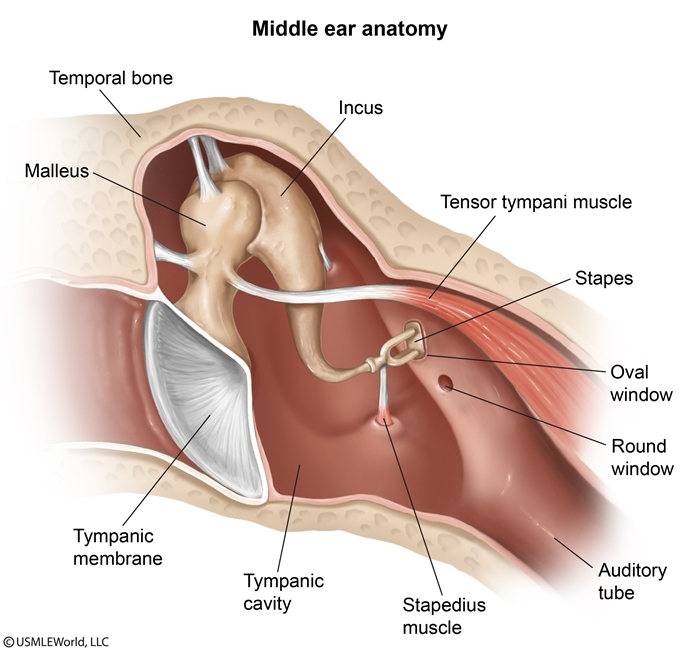Otosclerosis
Article Sections
Introduction
Otosclerosis results from an imbalance of bone resorption and deposition that leads to the stiffening and ultimate fixation of the stapes. This dampens the transmission of sound energy from the tympanic membrane to the cochlea, resulting in progressive conductive hearing loss.
Pathogenesis
Otosclerosis is an autosomal dominant condition characterized by abnormal bone remodeling of the otic capsule, the dense portion of the temporal bone that encases the inner ear. It most commonly affects the area around the oval window, where the stapes footplate interfaces with the vestibule of the inner ear (video 1).
In the early stages, osteoclastic bone resorption is followed by the deposition of spongiotic bone, which is eventually replaced by dense, sclerotic bone. As the bone becomes sclerotic and less elastic, the stapes becomes fixed in place, reducing its ability to transmit sound vibrations into the cochlea (
Continue Learning with UWorld
Get the full Otosclerosis article plus rich visuals, real-world cases, and in-depth insights from medical experts, all available through the UWorld Medical Library.
Figures
